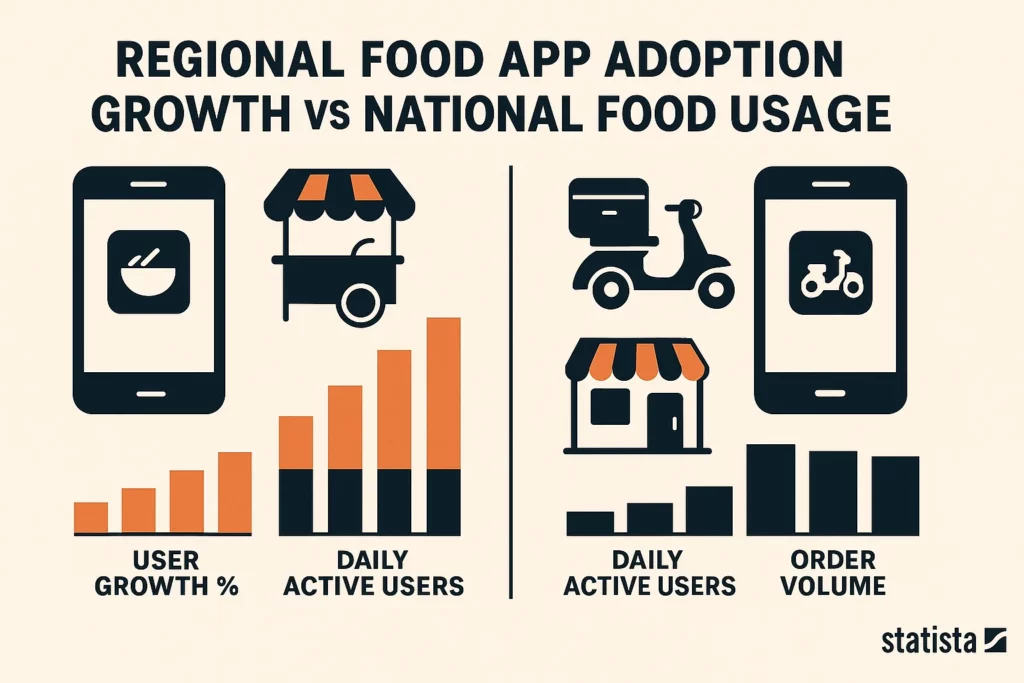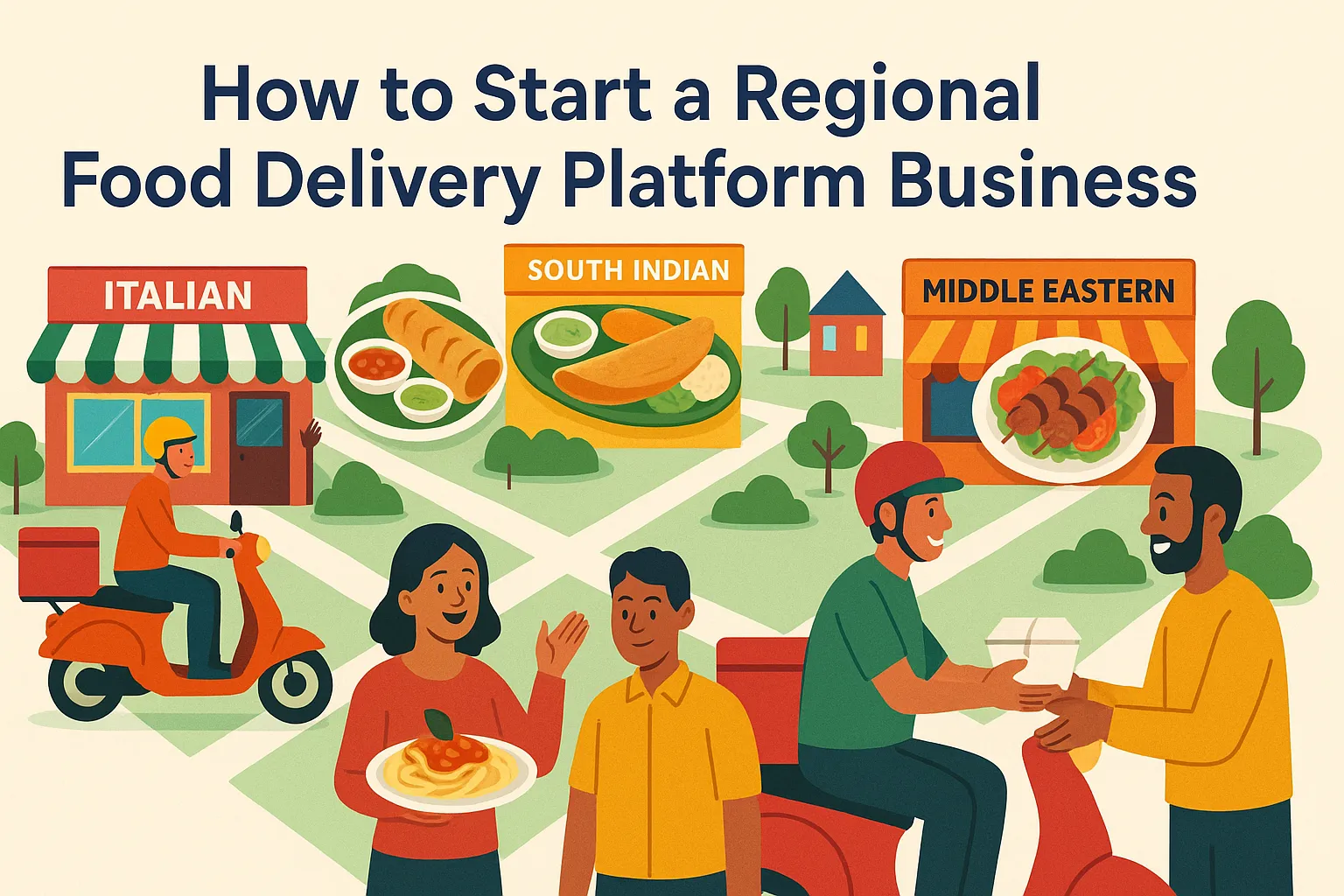Ever found yourself staring at your phone, craving your favorite local curry or grandma-style pizza… but the big-name apps just don’t deliver from that tiny place down the street? You’re not alone. There’s a growing wave of people who want food from real local kitchens—not just the top chains with glossy menus and marketing muscle.
Here’s the twist: while global food delivery giants dominate cities, there’s a flavorful gap in regional markets. Think small towns, semi-urban neighborhoods, and culturally unique areas. They crave hyperlocal convenience. And you? You could be the one serving it up.
Starting a regional food delivery platform isn’t just about tech. It’s about community, trust, and knowing your audience’s taste buds better than any algorithm ever could. That’s where entrepreneurs like you shine. And if you’re serious about building your own app clone that’s fast, scalable, and deliciously profitable—well, Miracuves has got your back.
Why Regional Food Delivery is a Hot Niche Right Now
Big Apps Miss the Local Flavor
Most global delivery apps optimize for scale. That means partnering with high-volume restaurants and skipping the small, beloved eateries that define a region. But local food is emotional—it’s tied to culture, tradition, and identity. And that’s exactly where regional delivery platforms win: by tapping into that soul food connection.
Post-Pandemic Digital Habits Are Here to Stay
From grandma ordering snacks online to students looking for midnight biryani, digital ordering has normalized across all age groups. The demand isn’t limited to metros anymore. Regional brands are popping up, and customers now expect delivery from the corner stall as much as from a national brand.

Key Features Every Regional Food App Must Have
Hyperlocal Discovery
Geo-fenced listings, area-based filtering, and neighborhood recommendations are a must. Users want to see who delivers in their “mohalla,” not across town.
Multi-Language Interface
In regional markets, users love to see content in their native language—whether it’s Hindi, Tamil, Marathi, or Bengali. It builds instant trust.
Offline Order Assistance
Yes, many customers still prefer calling. Your platform can offer click-to-call or WhatsApp ordering for less tech-savvy users.
Real-World Inspirations: Local Giants Doing It Right
FreshDirect
Based in NYC, FreshDirect nails regional delivery with its focus on fresh produce, neighborhood-specific selections, and warehouse proximity. They deliver faster because they’re close to the consumer.
Instacart
While known for grocery, their model shows the power of regional scaling. Instacart works by linking local stores, not owning inventory, giving you a lean operational model to emulate.
Amazon Fresh
It’s not just Amazon—it’s Amazon Fresh. The brand’s emphasis on delivery from regional warehouses shows how even the giants recognize local logistics power.
BigBasket Daily / Zepto
These ultra-fast delivery platforms are betting big on city-specific dark stores. While not entirely regional, they optimize for local inventories—a tactic worth studying.
Tech Stack & Business Model Breakdown
App Features (from a user POV):
- Restaurant search & filters
- Real-time order tracking
- Wallets, COD, UPI, Pay Later options
- Ratings and feedback
Business Model Options:
- Commission-based: Take a % from each order
- Delivery charge markup: Small cities are okay paying Rs.10-20 for delivery
- Restaurant subscriptions: Charge to get listed or promoted
Building & Scaling Your Own Platform
Here’s the part where many founders stumble: they try to code it all from scratch or hire expensive dev agencies. But there’s a smarter path. Miracuves offers ready-to-launch app clones tailored for regional food delivery. You get the tech minus the teething issues. The best part? It’s 100% customizable to your city, dialect, or delivery style.
Marketing Your Regional Food App: Street-Smart Tactics
Partner with Local Influencers
Food vloggers and area-famous home chefs can bring in credibility and eyeballs.
Hyperlocal SEO & Google My Business
Optimize for phrases like “food delivery in Vadodara” or “late-night snacks in Kochi.”
WhatsApp Campaigns & Flyers
Don’t underestimate the power of print and WhatsApp groups in tier-2 towns.
Conclusion
Local food isn’t just nourishment—it’s nostalgia, comfort, and culture on a plate. That’s why regional food delivery platforms don’t just serve meals, they spark memories and build loyalty. In a world flooded with cookie-cutter apps, going hyperlocal is your secret sauce.
We specialize in empowering trailblazers like you to launch lightning-fast, revenue-ready app clones tailored for local markets. Want to lead your town’s food revolution? We’re ready when you are.
FAQs
Q1. How much does it cost to launch a regional food delivery app?
Costs vary, but starting with an app clone can bring it down to a few thousand dollars instead of six figures.
Q2. Can I focus only on one neighborhood or city?
Absolutely. In fact, it’s smarter to dominate one area before expanding.
Q3. How do I find restaurants willing to join?
Start with personal visits, offer free listing initially, and show them your app in action.
Q4. What tech do I need to manage deliveries?
A delivery partner app, order tracking backend, and notification system are essential.
Q5. Is language customization important?
In regional markets? It’s a game-changer. The more local, the better.
Q6. What if I want to add groceries later?
Your app can evolve. Start with food, then expand like Instacart or FreshDirect.








